| Hollywoodland | Aug 29 2022 |

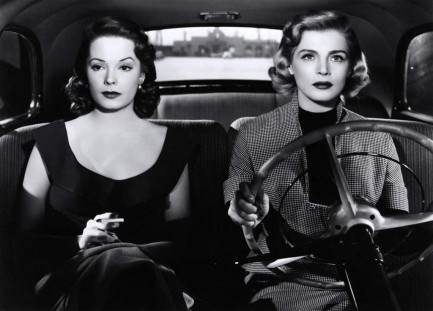
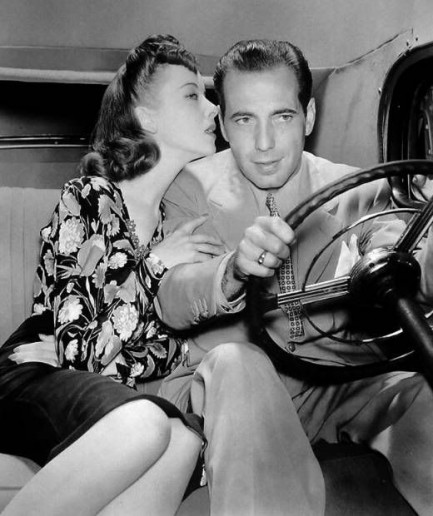 Humphrey Bogart tries to fake drive with Ida Lupino in his ear in 1941's High Sierra.
Humphrey Bogart tries to fake drive with Ida Lupino in his ear in 1941's High Sierra.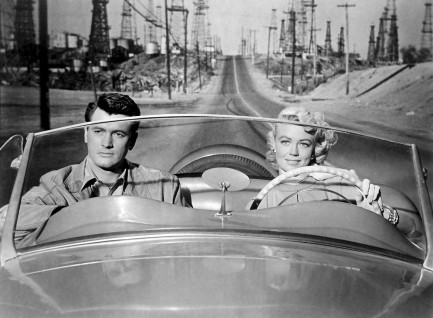 Dorothy Malone, Rock Hudson, and a rear projection of Long Beach, in 1956's Written on the Wind.
Dorothy Malone, Rock Hudson, and a rear projection of Long Beach, in 1956's Written on the Wind.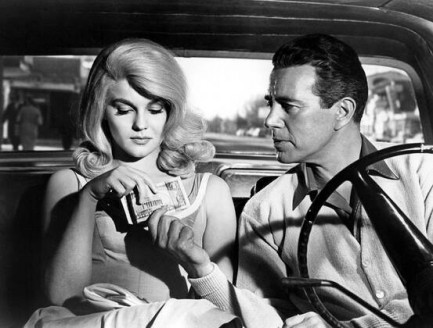 Ann-Margret and John Forsythe in Kitten with a Whip. We think they were parked at this point, but that's fine.
Ann-Margret and John Forsythe in Kitten with a Whip. We think they were parked at this point, but that's fine.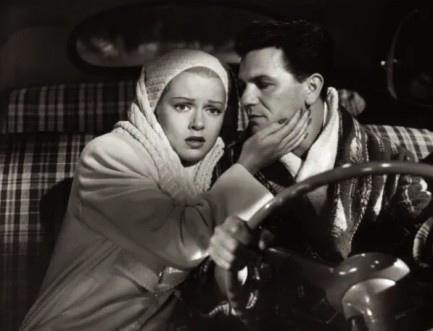
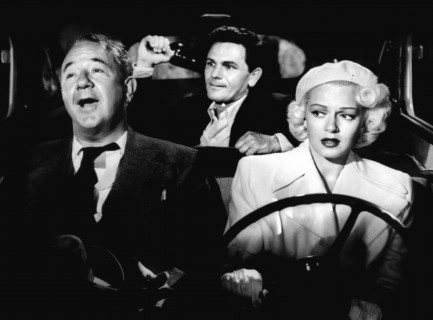 Two shots from 1946's The Postman Always Rings Twice with John Garfield and Lana Turner, followed by of shot of them with soon-to-be murdered Cecil Kellaway.
Two shots from 1946's The Postman Always Rings Twice with John Garfield and Lana Turner, followed by of shot of them with soon-to-be murdered Cecil Kellaway.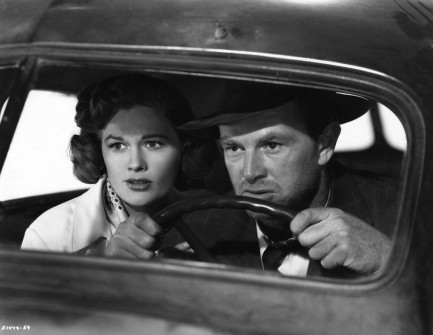
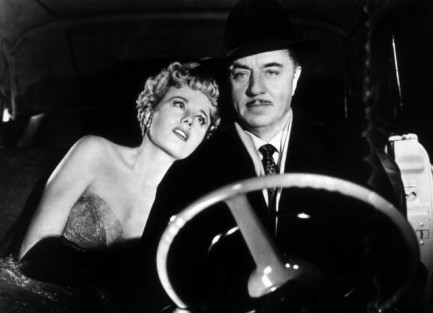 Shelley Winters, looking quite lovely here, fawns over dapper William Powell during a night drive in 1949's Take One False Step.
Shelley Winters, looking quite lovely here, fawns over dapper William Powell during a night drive in 1949's Take One False Step.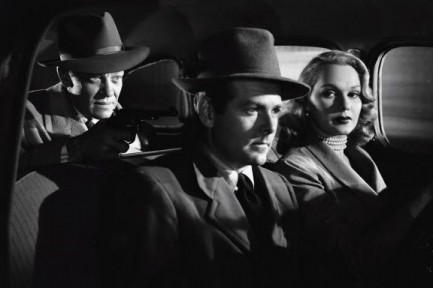 William Talman, James Flavin, and Adele Jergens share a tense ride in 1950's Armored Car Robbery.
William Talman, James Flavin, and Adele Jergens share a tense ride in 1950's Armored Car Robbery.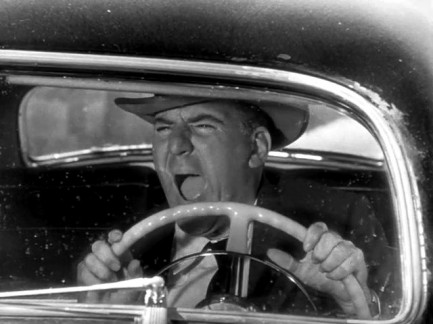 William Bendix rages in 1949's The Big Steal.
William Bendix rages in 1949's The Big Steal. Frank Sinatra drives contemplatively in Young at Heart, from 1954.
Frank Sinatra drives contemplatively in Young at Heart, from 1954.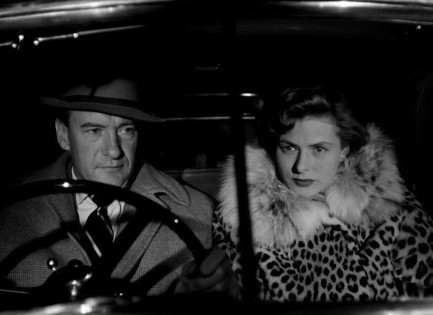
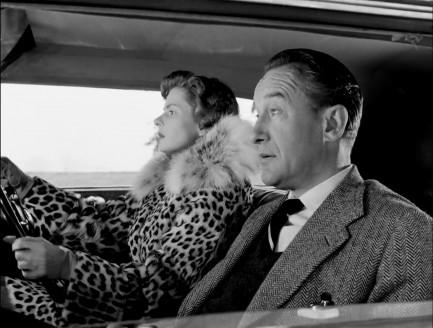 George Sanders drives Ingrid Bergman through Italy, and she returns the favor, in 1954's Viaggio in Italia.
George Sanders drives Ingrid Bergman through Italy, and she returns the favor, in 1954's Viaggio in Italia.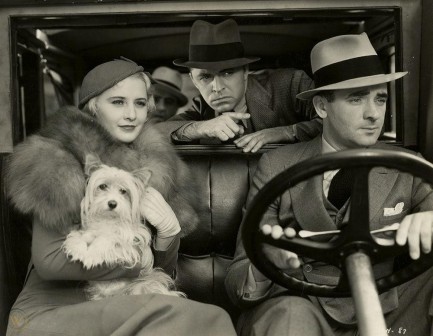 Harold Huber, Lyle Talbot, Barbara Stanwyck and her little dog too, from 1933's Ladies They Talk About.
Harold Huber, Lyle Talbot, Barbara Stanwyck and her little dog too, from 1933's Ladies They Talk About.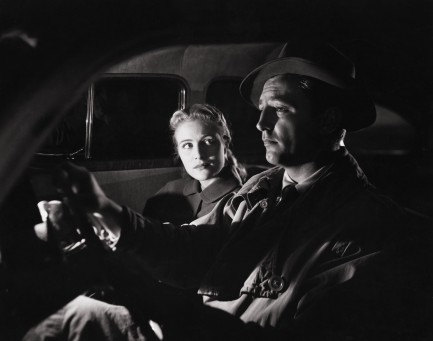
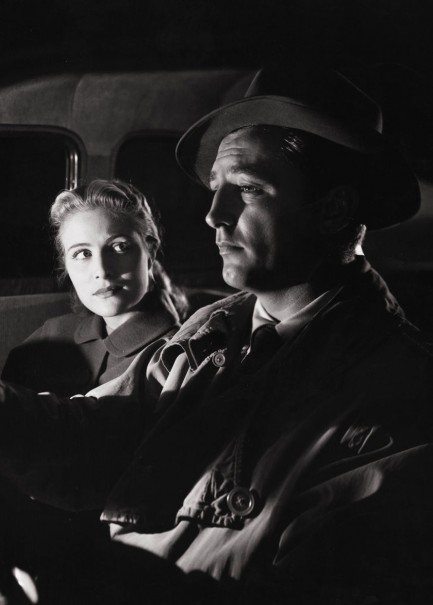 Virginia Huston tells Robert Mitchum his profile should be cast in bronze in 1947's Out of the Past.
Virginia Huston tells Robert Mitchum his profile should be cast in bronze in 1947's Out of the Past.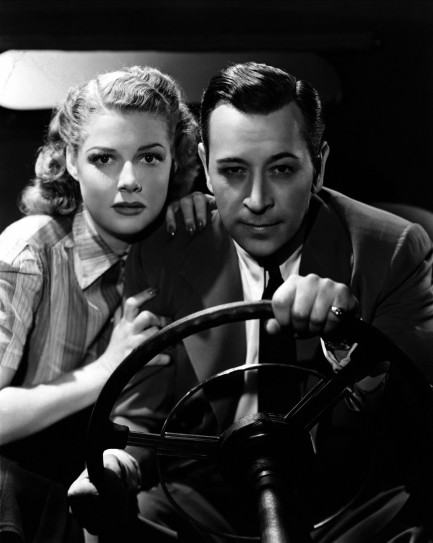 Ann Sheridan hangs onto to an intense George Raft in 1940's They Drive by Night.
Ann Sheridan hangs onto to an intense George Raft in 1940's They Drive by Night.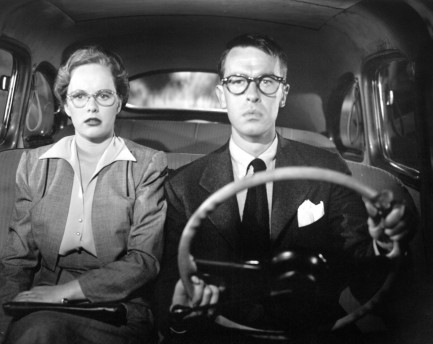 Peggy Cummins and John Dall suddenly realize they're wearing each other's glasses in 1950's Gun Crazy, a film that famously featured a real driving sequence, though not the one above.
Peggy Cummins and John Dall suddenly realize they're wearing each other's glasses in 1950's Gun Crazy, a film that famously featured a real driving sequence, though not the one above.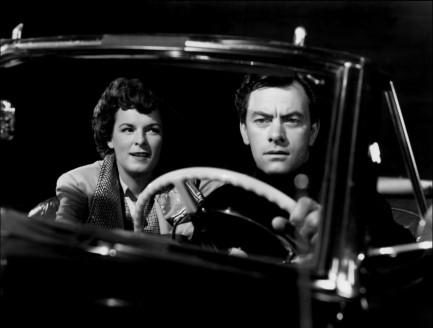 John Ireland and Mercedes McCambridge in 1951's The Scarf.
John Ireland and Mercedes McCambridge in 1951's The Scarf.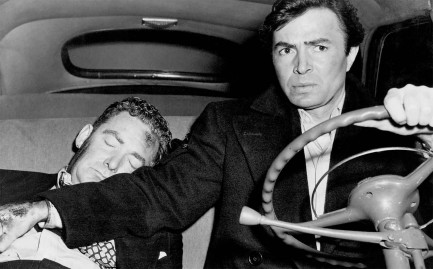 James Mason drives an unconscious Henry O'Neill in 1949's The Reckless Moment. Hopefully they're headed to an emergency room.
James Mason drives an unconscious Henry O'Neill in 1949's The Reckless Moment. Hopefully they're headed to an emergency room.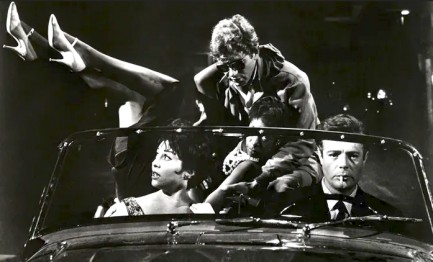 Marcello Mastroianni driving Walter Santesso, Mary Janes, and an unknown in 1960's La dolce vita.
Marcello Mastroianni driving Walter Santesso, Mary Janes, and an unknown in 1960's La dolce vita.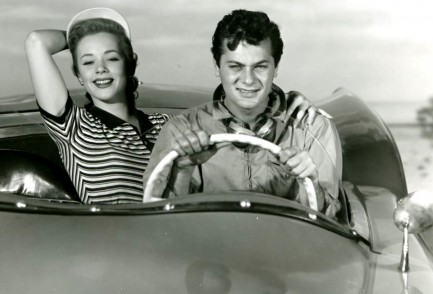 Tony Curtis thrills Piper Laurie with his convertible in 1954's Johnny Dark.
Tony Curtis thrills Piper Laurie with his convertible in 1954's Johnny Dark.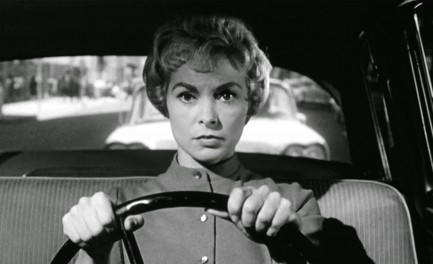 Janet Leigh drives distracted by worries, with no idea she should be thinking less about traffic and cops than cross-dressing psychos in 1960's Psycho.
Janet Leigh drives distracted by worries, with no idea she should be thinking less about traffic and cops than cross-dressing psychos in 1960's Psycho.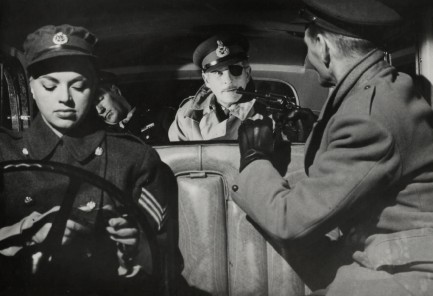 We're not sure who the passengers are in this one (the shot is from 1960's On the Double, and deals with Danny Kaye impersonating Wilfrid Hyde-White) but the driver is Diana Dors.
We're not sure who the passengers are in this one (the shot is from 1960's On the Double, and deals with Danny Kaye impersonating Wilfrid Hyde-White) but the driver is Diana Dors.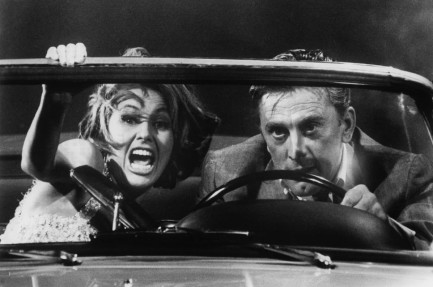 Kirk Douglas scares the bejesus out of Raquel Welch in 1962's Two Weeks in Another Town. We're familiar with her reaction, which is why we're glad the Pulp Intl. girlfriends don't need to drive here in Europe.
Kirk Douglas scares the bejesus out of Raquel Welch in 1962's Two Weeks in Another Town. We're familiar with her reaction, which is why we're glad the Pulp Intl. girlfriends don't need to drive here in Europe.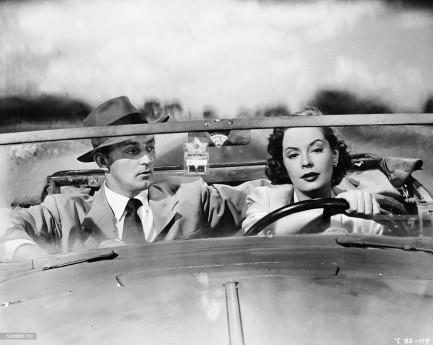 Robert Mitchum again, this time in the passenger seat, with Jane Greer driving (and William Bendix tailing them—already seen in panel ten), in 1949's The Big Steal. The film is notable for its many real driving scenes.
Robert Mitchum again, this time in the passenger seat, with Jane Greer driving (and William Bendix tailing them—already seen in panel ten), in 1949's The Big Steal. The film is notable for its many real driving scenes.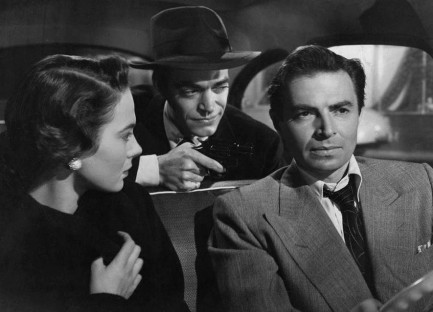 James Mason keeps cool as Jack Elam threatens him as Märta Torén watches from the passenger seat in 1950's One Way Street.
James Mason keeps cool as Jack Elam threatens him as Märta Torén watches from the passenger seat in 1950's One Way Street.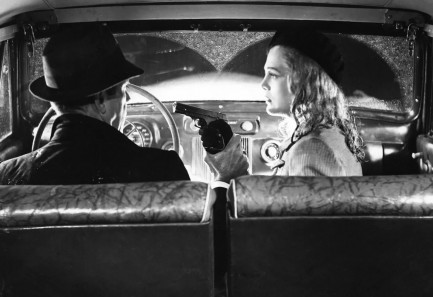 And finally, to take a new perspective on the subject, here's Bogart and Lizabeth Scott in 1947's Dead Reckoning.
And finally, to take a new perspective on the subject, here's Bogart and Lizabeth Scott in 1947's Dead Reckoning.| Vintage Pulp | Mar 27 2018 |

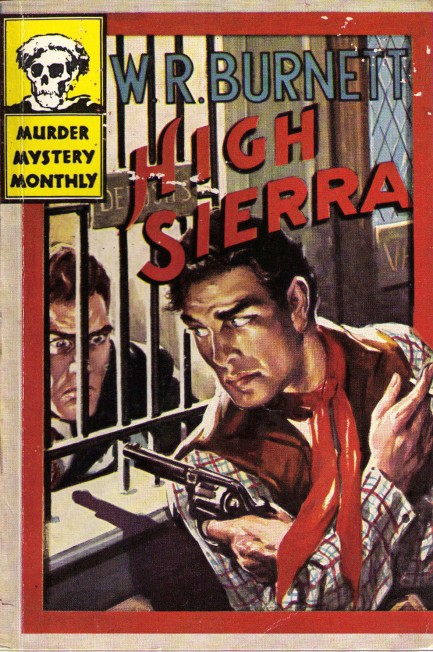
Above, a great cover for W.R. Burnett's High Sierra from Avon Publications' series Murder Mystery Monthly, 1946, featuring a very slick robber painted by Paul Stahr. We shared another cover for this book you can see here.
| Femmes Fatales | Apr 5 2017 |

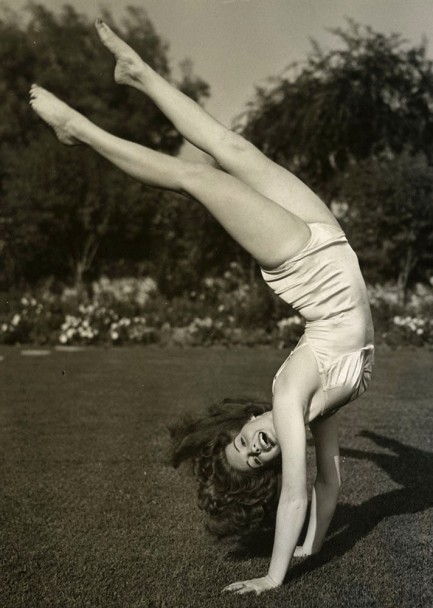
| Vintage Pulp | Jan 4 2016 |

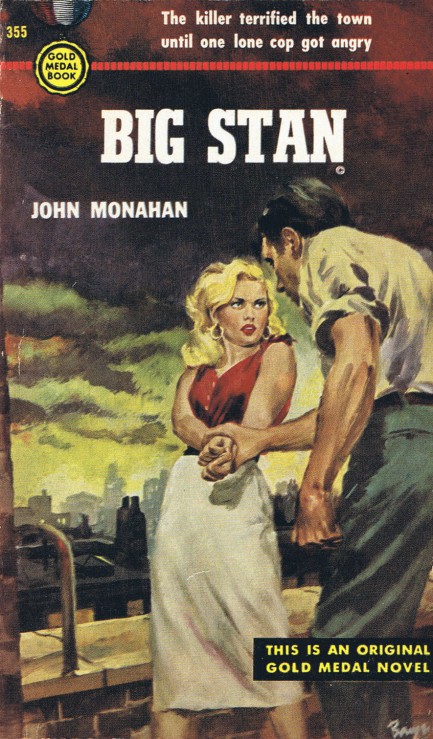
John Monahan was a pseudonym used by W.R. Burnett, the man behind Little Caesar, High Sierra, The Asphalt Jungle, and other enduring novels. He also wrote or co-wrote such screenplays as This Gun for Hire and Scarface. In Big Stan he tells the story of a cop named Stanislaus who’s tasked with catching a masked criminal known as the Black Phantom. The Phantom proves elusive until he makes the mistake of targeting Stan’s wife. It’s a fairly well regarded book from an author who wrote some of the classics. The art on this 1953 Gold Medal paperback is by Barye Phillips.
| Hollywoodland | May 26 2014 |

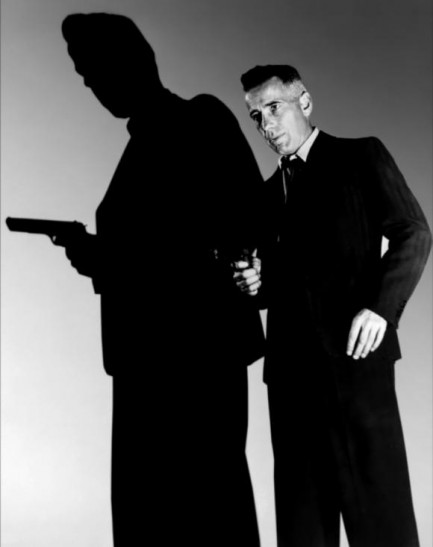
| Vintage Pulp | Feb 27 2014 |

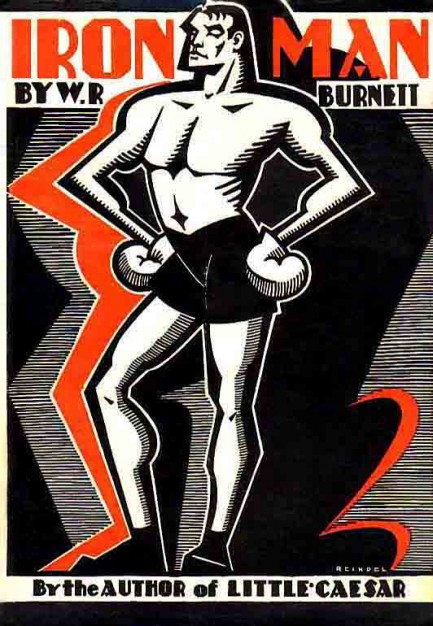
Above you see a very interesting dust jacket for W.R. Burnett’s 1930 novel Iron Man, which is the story of a mechanic turned middleweight boxer turned world champion. Burnett had more than fifty films made of his fiction and screenplays, including Little Caesar, High Sierra, The Asphalt Jungle, Scarface, and many more. But we’re focused on the cover art today. It’s by Edna Reindel, and it has both an art deco influence and a purely Reindel style that downplays outright aggression in favor of smoldering defiance, like Enrico del Debbio’s boxer in Rome’s Foro Italico. Alternatively, it could look like something more prosaic, like a male model’s runway pose (it’s okay to think of Zoolander—we did too). Anyway, we find this an incredibly beautiful piece of art, certainly wallworthy, and doubtless a contributing factor why first editions of this book go for between $75 and $200. We will definitely find more of Reindel’s work and share it later.
| Vintage Pulp | Jan 11 2010 |

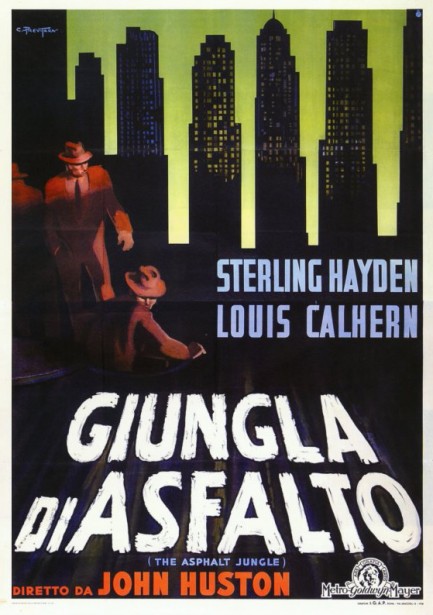
The Asphalt Jungle is half a century old, but remains one of the best procedural heist films ever made. The men who commit the robbery at the center of this movie come from all walks of life—some are perennial losers, others are opportunists, and others are just having a hard time and need a way out. All of them long for better lives. All of them desperately need the money to get there. These footmen, facilitators, and financial backers plan every aspect of a lucrative heist, but the caper begins falling apart almost immediately, due to back luck, mistrust, and greed.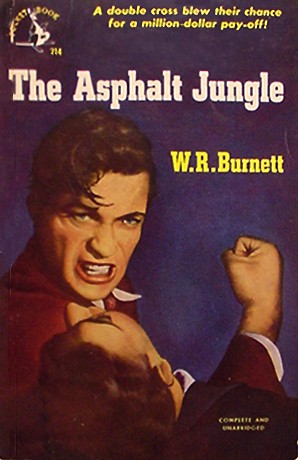
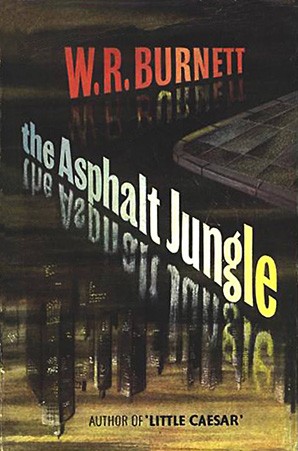
Sterling Hayden, who we’ve mentioned before, is incendiary in the lead, exuding extreme menace but with a hint of recognizable humanity behind the eyes. One of his best moments comes in a brief but exquisitely choreographed shooting involving a thrown valise.
All of this takes place under the sure hand of director John Huston, working from a 1949 book by William Riley Burnett. Burnett was a bit of a legend himself. He was a prolific crime novelist who wrote the source material for Little Caesar, Scarface, and High Sierra, and whose screenplays include This Gun for Hire, I Died a Thousand Times, and Nobody Lives Forever.
Put Burnett, Huston and Hayden together (not to mention James Whitmore, Jean Hagen, Sam Jaffe, and a young Marilyn Monroe in a small role as a rich man's plaything) and you get exactly what you’d expect—a genre classic that transcends its boundaries and becomes instead a piece of high art.
The film was a major hit that wowed audiences worldwide. At top you see the Italian promo art, and below that we have both the hardback and paperback cover art. The Asphalt Jungle opened as Giungla di asfalto in Italy today in 1951.




































































